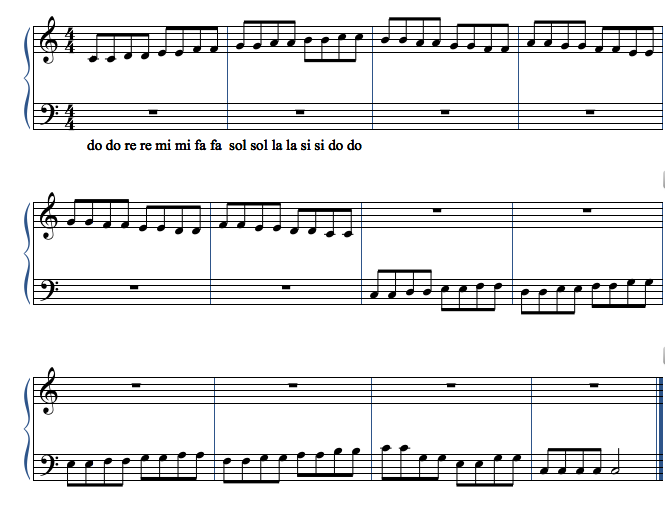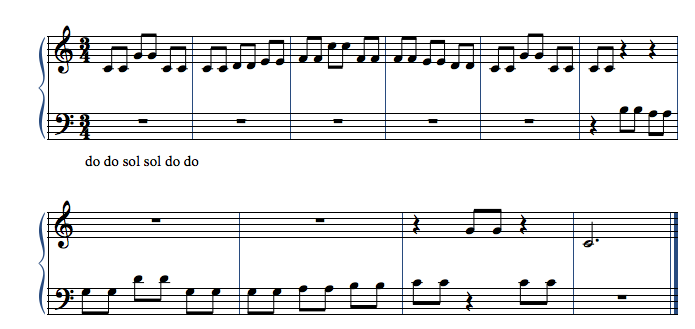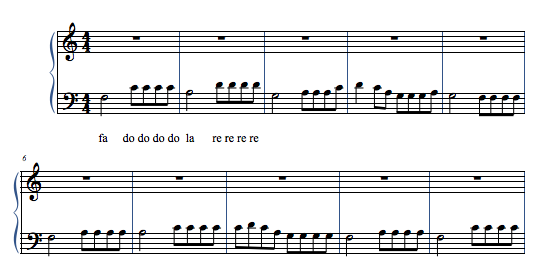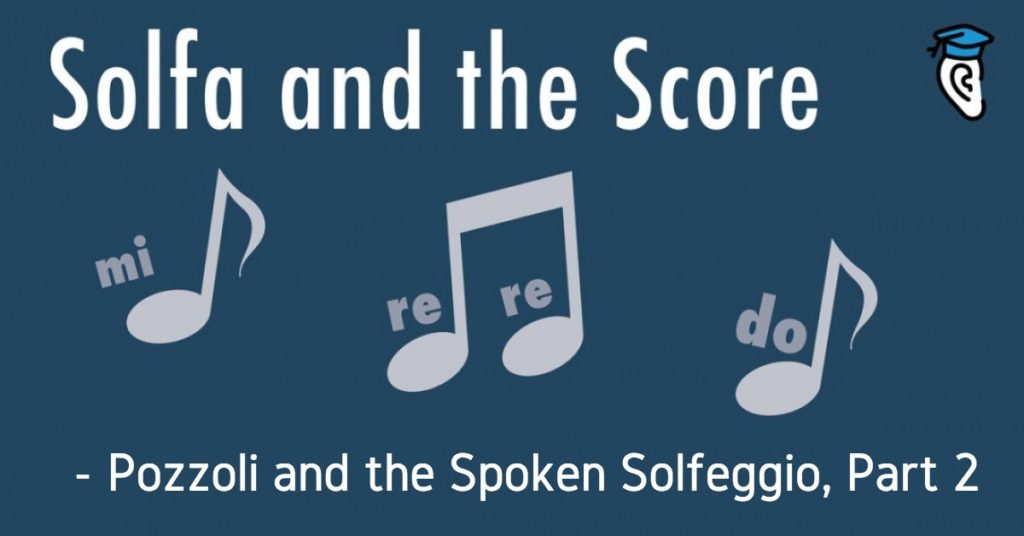In the first part of this series we introduced the techniques taught by the Italian Ettore Pozzoli, for practicing solfeggio in two stages: Spoken and Sung Solfeggio. In this article we’ll deepen what we have learned so far in order to acquire proficiency in remembering the syllables corresponding to each note on the staff.
In the last part we explained without sufficient practice it’s easy to get confused while trying to remember the syllables corresponding to a specific pitch on the musical staff. We introduced the “Pozzoli” method, a technique where you “speak” the score first with its normal rhythm, and once this process has been successfully completed, a second phase where you sing the notes, easier now that the pitches’ names are fully internalized.
If you went through that first tutorial you will remember that the first section featured pitches without rhythm both in the treble and bass clef, progressively increasing the leaps between pitches. Then we applied this technique to simple rhythms featuring quarter notes, half notes and finally a combination of both. The usage of a metronome was now a requirement, with a recommended speed of 120 BPM. Again the exercises grew increasingly challenging in the intervallic leaps they used.
Now it is time to go further into more complicated musical ideas.
We will explore smaller rhythmic subdivisions and more realistic melodies. The exercises featured here are composed specifically for your practice, using the classical composition technique of motif variation. But you won’t have to worry much about how they were made – just enjoy!

Solfeggio Exercises
Let’s warm up first with some scales in eighth notes, setting our metronome time to 80 BPM. Our goal as before is to first speak the names of the tones without losing the beat three times in a row, and then proceed to sing the exercise (including pronouncing the right syllables) another three times without mistakes.
You can use the piano recording to help give you the right pitches and tempo, or listen to the sung demonstration if needed.
Exercise 1
This first exercise should be easy for you, as it doesn’t feature a complex musical idea, just a familiarisation with a faster browsing of the score and the respective tones’ syllables. Be prepared for the octave leap in measure 7! If you need to shift the exercise into a more comfortable range for your singing voice that’s fine.

Exercise 2
For our second exercise we continue using eighth notes, as this allows repeating each note to help us memorise better the corresponding syllable for each pitch within the context of a melody. The only leap we will have to do is a perfect fifth.
This time we have an actual musical idea, but please do set your priority first in getting the correct pitch names before worrying about singing nicely! Please do also realise we will perform in a different time measure, 3/4, which is very important to bear in mind before setting up your metronome (which should be at 80 BPM again).

Exercise 3
In this third exercise we will focus again repetition of a note in a fast subdivision, eighth notes, but this time we will explore intervallic leaps guided by sequences: transposition of small musical motif.
We will also practice a combination of different rhythmical figures in order to be able to sing a full musical idea. Again set up your metronome at 80 BPM and practice the exercise following the rhythm but speaking the syllables instead of singing the pitches. Once you are able to repeat the exercise three times without mistakes, is time to sing it another three times from beginning to end:

Did you note something distinctive about this melody? That’s right, it was composed with a pentatonic scale. Pentatonic scales are widely used in oriental music, and western genres related to blues, rock and even pop music. Is also a very powerful tool for improvisation, as we will come to discover later in this series.
This concludes our introduction to Pozzoli’s methods and techniques. If you want to deepen your proficiency in this alternative way to learn solfeggio, please refer to the book “Solfeggi parlati e cantati” by Ettori Pozzoli and edited by Ricordi, which is widely available through specialised music bookstores. If you are not able to get hold of an English copy you shouldn’t worry, as the core of the book is simply a series of exercises progressively getting more and more complicated. You can also look for the updated version “The New Pozzoli” (“Il Nuovo Pozzoli” in the original Italian) edited by Ricordi.
Practice with the exercises above to increase your confidence in relating the solfa syllables to the staff. Try applying the same approach to other sheet music you have! Gradually you will come to have an instinct for which syllables correspond to each note of the scale on paper. As we continue the series we will practice using the spoken and sung solfeggio approach to aid improvisation, transcription and playing by ear. Stay tuned!








